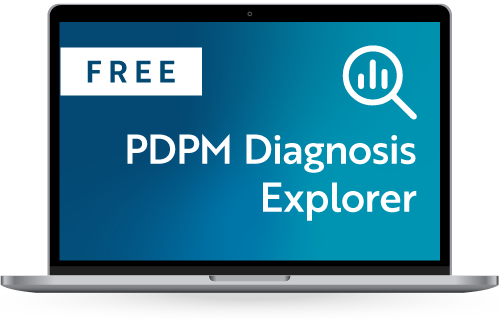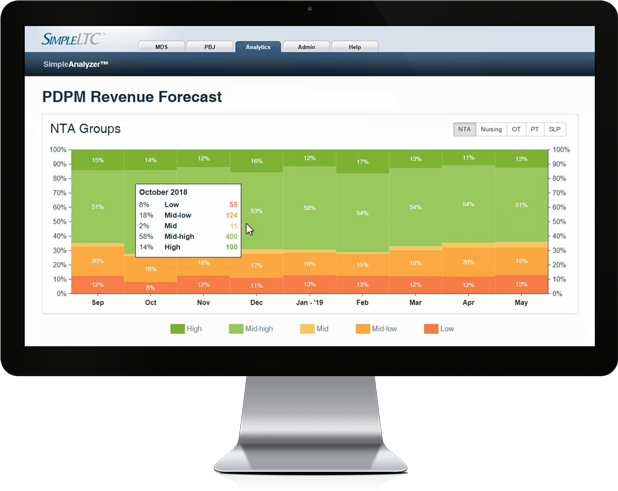Accurate coding has always been a key foundation for maximizing reimbursement. Success under PDPM will require more than just accuracy, however. To achieve long-term PDPM success, you’ll need to implement some essential PDPM coding practices at your facility.
Want to optimize your coding practices before PDPM becomes a reality on Oct. 1? Read on and we’ll show what to look out for and how to optimize PDPM coding practices in four simple steps.
1. Identify a valid primary diagnosis
By far, the most important thing you can do now to prepare for PDPM success is to accurately document your primary diagnosis. On Oct. 1, CMS will not accept an MDS with an invalid primary diagnosis. But don’t worry — there are a few resources you can use now to identify if the primary diagnosis is valid.
CMS published the CMS Clinical Category Crosswalk tool listing the different primary diagnoses and their associated clinical categories. It shows which are primary diagnoses are invalid and labeled “Return to Provider”.
If you’re looking for a more efficient way to view different diagnoses, you’re in luck. To help you prepare for PDPM, we’ve launched a FREE version of our powerful PDPM Diagnosis Explorer tool. With our PDPM Diagnoses Explorer tool, you can easily navigate through 65,000 ICD-10 codes, verify valid diagnosis codes, identify associated clinical categories, explore NTA and SLP comorbidities, and much more.
In order to calculate PDPM case mix groups, you’ll need to identify the primary diagnosis and include it on the same field on all your 5-day PPS assessments. So leveraging the Diagnoses Explorer tool is a critical step in understanding and forecasting your PDPM reimbursement rates.
2. Code the primary diagnosis in I8000A
To forecast your PDPM reimbursement levels before Oct. 1, we strongly advise that you code the primary diagnosis under I8000A. Doing so will allow SimpleAnalyzer™ (or other internal tools you might be using) to calculate PDPM reimbursement rates prior to Oct. 1.
After Oct. 1, you will need to document your primary diagnosis under another field: I0020B. But for now, place the primary diagnosis ICD-10 code in I8000A even if the primary diagnosis is already checked off in another “I” field. This may mean duplicating the diagnosis in I8000A, but this practice will help you accurately calculate your per-diem rates before Oct 1.
3. Identify the active diagnoses
Important: Don’t leave out any active diagnoses and don’t skip the I0100-17900 fields because they are a potential NTA and SLP comorbidities. There are also other I8000 values that could be potential NTA and SLP comorbidities as well.
4. Identify non-diagnosis NTA comorbidities
We’ve noticed in a lot of our case studies that clinical features, which define many of the NTA comorbidities, are not making it to the MDS from the clinical record. Make sure you study and understand what MDS fields beyond the I8000 diagnoses affect NTA comorbidity scores.
Tying it all together
Begin by identifying a valid primary diagnosis. Use our FREE Diagnoses Explorer tool to explore primary diagnoses and associated default clinical category, as this can heavily impact a resident’s base per-diem rate. Remember to put the primary diagnosis ICD-10 code in the I8000A field if you want to forecast your PDPM reimbursement before Oct. 1. Document active diagnoses and non-diagnosis NTA comorbidities since both are important for maximizing PDPM reimbursement.
If you practice these tips, you can achieve optimal coding under PDPM.





2 Comments on “PDPM: 4 simple steps to optimal coding”
Thank you
You’re welcome, Bonnie!